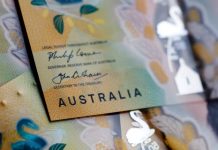- Canada’s economy grew 1.3% (q/q, annualized) in the third quarter, meeting both consensus and the Bank of Canada’s expectations. Accounting for price changes, nominal GDP rose 1.7%, as weaker export prices held back overall price increases.
- Despite a fairly modest headline, the details of today’s report were solid. Households stepped up the pace of spending to 1.6% with good showings across the major subcomponents, although on a year-on-year basis, volumes were up an unimpressive 1.4%. Investment in residential structures surged forward, (up 13.3% – the strongest pace since 2012) on strength in both construction and resale activity.
- Non-residential business investment was also strong. Structures spending (+11%) was driven higher by gains in engineering structures (13% – a third quarterly expansion), and non-residential building investment also rose (+5.8%). Machinery and equipment spending climbed higher (+7%), with a surge in vehicle spending, particularly passenger cars (+76%) leading the way. Spending on intellectual property products was up for a second quarter (+6%), driven entirely by software expenditures, as R+D and mineral exploration both fell.
- All this was enough to send final domestic demand up 3.2%. Notably, today’s report also came with Statistics Canada’s ‘benchmark’ revisions that incorporate important, but lagged data, such as tax returns. Statistics Canada now reports domestic demand as contracting only once in the past three years (2018Q4), rather than the three drops previously reported, suggesting the Canadian economy had more strength than previously thought, driven by stronger than initially reported business investment.
- With strong final domestic demand, trade and inventories dragged the headline lower. On the former, a 1.5% drop in exports resulted from a relatively broad-based drop off in shipments of goods and a nearly flat services performance, while imports were effectively flat on the quarter. Inventory building also slowed in the quarter, taking 1.6 percentage points off headline GDP growth.
- Flipping to the income side of the report, compensation of employees rose 5.2% in aggregate. With spending relatively modest in comparison, the household savings rate rose slightly to 3.2%, from an upwardly revised 3.0% (was: 1.7%). The gross operating surplus, a measure of corporate incomes, fell 9.3%.
- The economy recorded a 0.1% gain monthly GDP in September. Thirteen of the twenty major industries expanded output. Among the stronger performing industries were construction (+0.6%), wholesale trade (+0.9%), and real estate (+0.2%).
Key Implications
- A happy surprise. Not only was growth a hair stronger than we’d anticipated in the third quarter, the details were better too. A solid gain in domestic demand is encouraging, as is the fact that a good chunk of the gain can be put down to strength in business investment. And while inventories held back the overall performance, this can be taken as a welcome development given elevated levels.
- It is not all smooth sailing ahead – the Canadian economy will face near-term headwinds in the form of labour disruptions and a weak global backdrop. But, with today’s data, particularly the new historic context that came with Statistics Canada’s revisions, the economy appears to be a bit more resilient than previously thought.
- Today’s report is likely to be well received at the Bank of Canada, as they had penciled in a weaker composition of growth (notably a contraction in non-residential investment). A rate cut next week is clearly off the table. Still, with only modest growth expected going forward and the pace of household spending trending lower year-on-year, there is still plenty to fret about.













